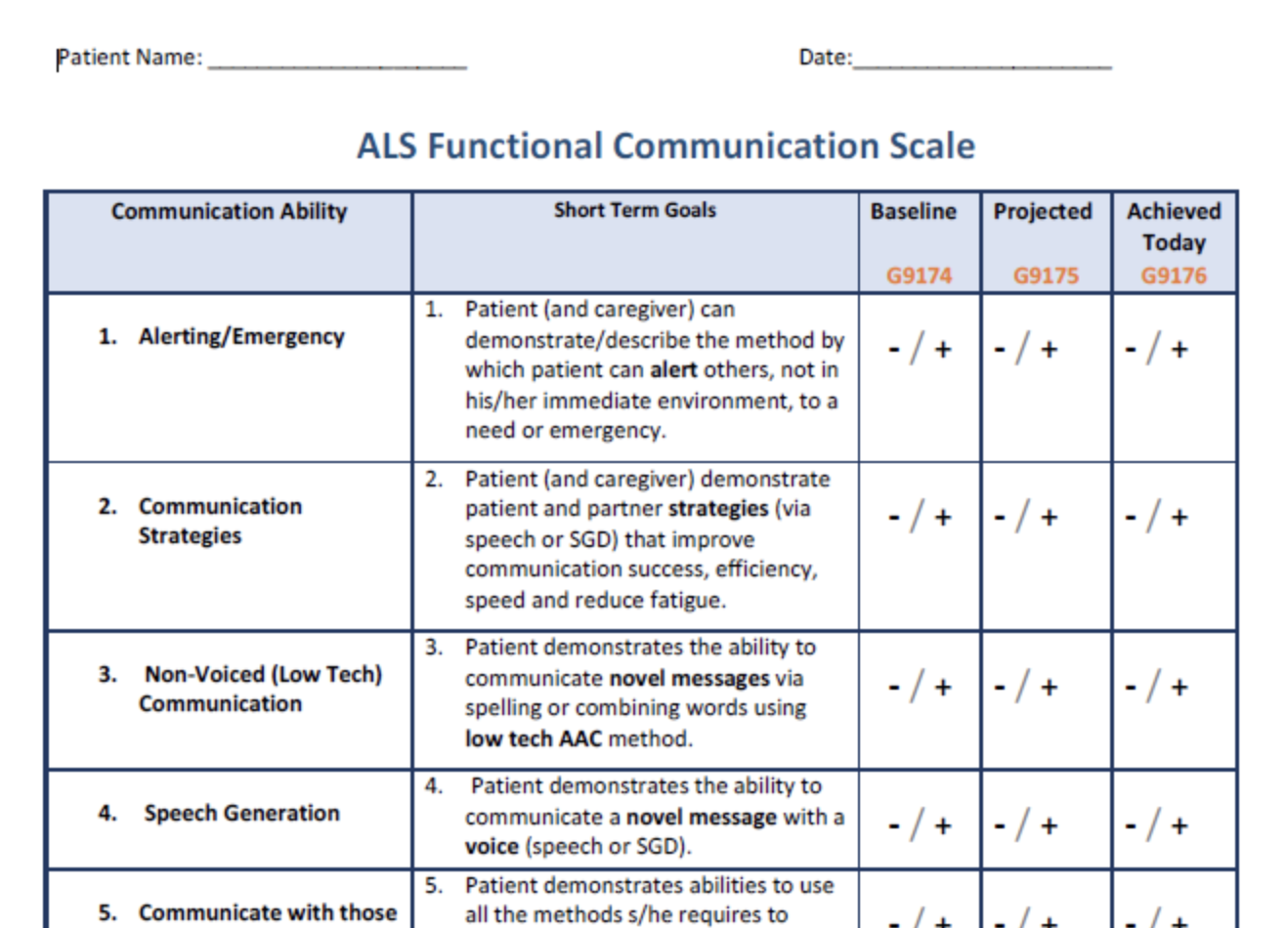Adult Acquired Evaluation Tools
This is a list of tools and resources helpful for evaluating adults with acquired communication impairments (e.g. from stroke, TBI, ALS, etc.). These are adults who had neurotypical communication skills and lost them (or are progressively losing them) due to injury or disease. We encourage you to explore and judge for yourself which to add to your toolbox.
Do you have a favorite tool or resource for evaluating adults with acquired or progressive communication impairments that we missed? Send us an email to share!
Please note: This is not an exhaustive list of all possible evaluation tools. Inclusion on this list is not an endorsement or recommendation.
This information was current at the time it was posted. If you spot a needed update, please send us an email at info@nwacs.info. Thank you for helping us keep this information up-to-date and useful!
AAC Feature Matching Overview (from University of Wisconsin Health)
Checklist of critical features to consider during the feature matching process.
ALS Functional Communication Scale
A means for documenting the communication abilities as well as the changes resulting from AAC interventions for patients with ALS developed by Amy Roman, MS, CCC-SLP
ALS Functional Rating Scale-Revised (ALSFRS-R)
“The ALS Functional Rating Scale-Revised is used to assess changes in physical functioning in persons with Amyotrophic Lateral Sclerosis (ALS).” It examines function status and detects changes over time.
Aphasia Assessment Materials from UNL
Includes links to:
The Multimodal Communication Screening Task for Persons with Aphasia
Scanning/Visual Field/Print Size/Attention Screening Task
Aphasia Needs Assessment
AAC-Aphasia Categories of Communicators Checklist
C.O.D.E.S. Adult Framework
The C.O.D.E.S. Framework has been developed to help monitor progress of an individual using an AAC system. It is a framework for measuring effective communication for adults with acquired disabilities and allows you to identify and monitor skill development over time.
Cognitive Linguistic Quick Test-Plus (CLQT+)
“The criterion-referenced Cognitive Linguistic Quick Test (CLQT™+) quickly assesses strengths and weaknesses in five cognitive domains, and adds an optional administration path for people with aphasia.”
Communication Needs Questionnaire (ALS)
Questionnaire created by Lisa G. Bardach, CCC-SLP, ALS of Michigan 2017
DYNAMIC AAC EVALUATION PROTOCOL – ADULT Acquired or Progressive
Feature Matching Checklists from Scott Marfilius and Kelly Fonner
Quality of Communication Life Scale (ASHA-QCL)
“Quality of communication life is defined as the extent to which a person’s communication acts—influenced by personal and environmental factors, and filtered through a person’s own perspective—allow meaningful participation in life situations.
The ASHA QCL captures information about the impact of a communication disorder on an adult’s relationships; communication; interactions; participation in social, leisure, work, and education activities; and overall quality of life. It is intended to provide information about the psychosocial, vocational, and educational effects of having a communication impairment.”
Social Networks
Social Networks is an assessment and intervention planning tool designed to help individuals, their families and professionals determine the most appropriate technologies and communication strategies for people with complex communication needs. Helps identify communication opportunities versus communication barriers.












